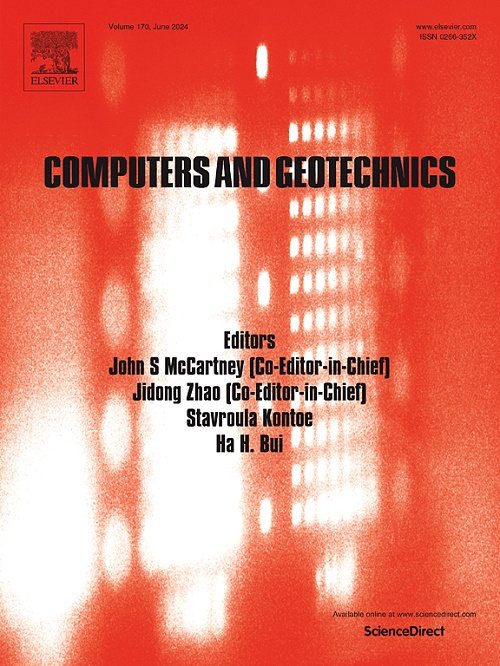Enhancing accuracy and efficiency in cyclic liquefaction modeling: An automatic calibration framework for advanced constitutive models
IF 5.3
1区 工程技术
Q1 COMPUTER SCIENCE, INTERDISCIPLINARY APPLICATIONS
引用次数: 0
Abstract
Precise calibration of constitutive models for cyclic liquefaction is essential but often time-consuming and requires significant expertise, limiting broader application in geotechnical practice. This paper introduces an automatic calibration tool designed to streamline the process for advanced constitutive models under both monotonic and cyclic loading. The tool supports various types of monotonic and cyclic laboratory test data, offers multiple choices of suitable comparison planes for error calculation, with a focus to also suit cyclic liquefaction problems, and employs advanced optimization techniques. The calibration follows a two-stage approach: first, optimizing parameters governing monotonic response using monotonic test data; second, refining these and additional parameters with both monotonic and cyclic data. The critical state parameters are fixed throughout, while the elasticity parameters are fixed in the second stage, all within defined bounds. Using this automatic calibration tool and the adapted calibration strategy, extensive element-level test data was used to determine the parameters of the SANISAND-MSf model for a given sand. These calibrated parameters were then used to simulate boundary value problems, including centrifuge tests of liquefiable sand slopes and sheet-pile-supported liquefiable sand deposits, all subjected to base excitations, demonstrating excellent alignment with experimental results. This validation highlights the robustness, reproducibility, and accuracy of the tool to model cyclic liquefaction while significantly reducing the expertise and time required for calibration. This represents a significant advancement toward the broader adoption of advanced constitutive soil models in geotechnical engineering practice.
求助全文
约1分钟内获得全文
求助全文
来源期刊

Computers and Geotechnics
地学-地球科学综合
CiteScore
9.10
自引率
15.10%
发文量
438
审稿时长
45 days
期刊介绍:
The use of computers is firmly established in geotechnical engineering and continues to grow rapidly in both engineering practice and academe. The development of advanced numerical techniques and constitutive modeling, in conjunction with rapid developments in computer hardware, enables problems to be tackled that were unthinkable even a few years ago. Computers and Geotechnics provides an up-to-date reference for engineers and researchers engaged in computer aided analysis and research in geotechnical engineering. The journal is intended for an expeditious dissemination of advanced computer applications across a broad range of geotechnical topics. Contributions on advances in numerical algorithms, computer implementation of new constitutive models and probabilistic methods are especially encouraged.
 求助内容:
求助内容: 应助结果提醒方式:
应助结果提醒方式:


